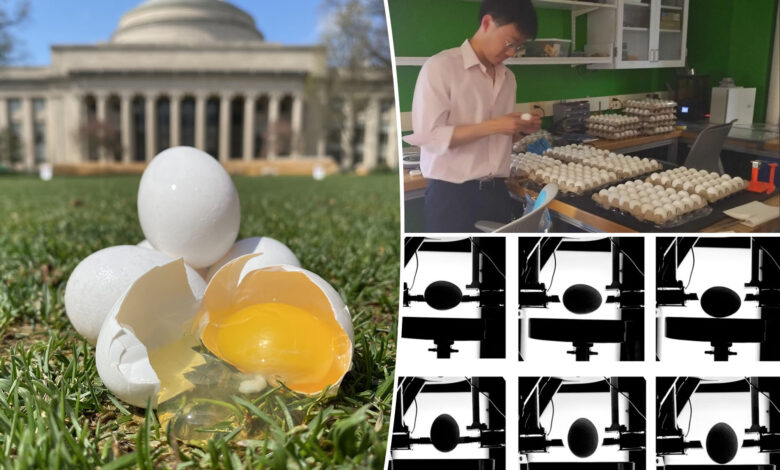Tired of cracked eggs? Scientists reveal the surprising storage method to avoid that

Egg-stra, egg-stra!
Scientists have revealed the best way to store your precious breakfast orbs — and it’s not the way they’re packaged now.
Turns out, laying eggs on their side — not storing them upright — is the best way to keep them from cracking, according to MIT researchers.
A new study, published Thursday in the journal Communications Physics, found that eggs dropped sideways are less likely to break than those dropped vertically.
“Eggs are tougher when loaded on their equator,” the researchers said.
It turns out the sides can take more of a beating than their pointy or rounded ends, and that could mean a lot for proper storage.
Researchers tested 180 eggs, dropping them from three different heights to see how they’d hold up in different orientations.
The result?
Eggs dropped vertically were more likely to crack than those dropped horizontally, even at the lowest height.
Of the eggs dropped vertically from a mere 8 millimeters, over half of them shattered.
But when dropped sideways? Fewer than 10% of eggs suffered a break.
The scientists’ proper-storage assessment concluded that “eggs are tougher when loaded horizontally.”
And when it comes to cracking eggs for cooking, MIT’s findings suggest that instead of smacking them on the middle, you’re better off aiming for the top or bottom.
In a related matter, what should you do if your eggs are already cracked?
“If you know that you just cracked the egg by accident, then I would cook that one up and call it good,” Maine-based backyard chicken expert Lisa Steele told Fox News Digital in January.
However, Steele warned against using eggs found already cracked in the carton, saying, “I wouldn’t use an egg that I found cracked in a carton I had bought in the store,” since it’s impossible to know how long it’s been sitting there.
The United States Department of Agriculture recently reported that egg production in the U.S. dropped 4% in November 2024 amid rising bird flu cases and soaring prices.
As such, costs are cracking records at the supermarket — hitting $6.23 a dozen in March, up nearly 6% from February and a jaw-dropping 60% from last year, according to the Bureau of Labor Statistics.
For now, the MIT scientists have a message for egg packagers everywhere: It’s time to flip the script — and the eggs.




